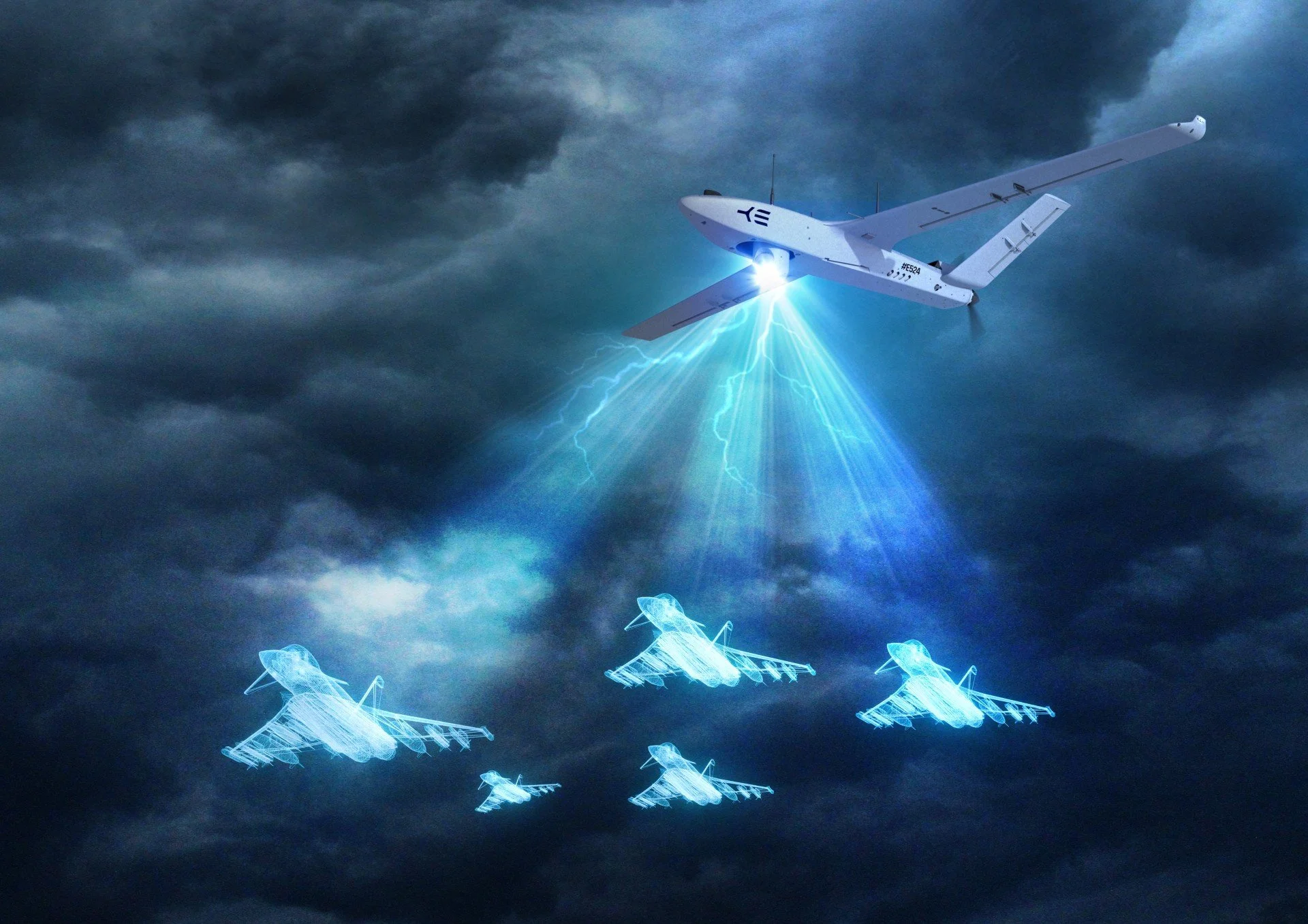Contested Skies: Ukraine, Electromagnetic Warfare, and the evolving nature of Air Superiority
I grew up with the doctrine that controlling the skies was paramount. Conflicts like Desert Storm and Bosnia seemed to prove it – coalition air forces quickly swept enemy planes and air defences aside, achieving air superiority within days. However, the war in Ukraine has challenged this perceived wisdom. Ukraine has been a wake-up call: Instead of one side ruling the skies, we’re witnessing something more akin to the Battle of Britain – a high-intensity contest where denial of airspace, not dominance, is a defining feature.
In Ukraine, neither Russia nor Ukraine can safely operate aircraft over the front lines for long. Advanced surface-to-air missile (SAM) batteries, from Cold War-era S-300s to modern systems, create lethal no-fly zones that force pilots to fly low or stay out of range. Meanwhile, waves of drones and cruise missiles fill the air – some carrying munitions, others acting as decoys – in an effort to saturate and confuse those air defences. The result is an air war where control of the skies is fragmented and fleeting. In fact, the very concept of “air superiority” is being redefined.
Reading Battle of the Beams reinforced a simple truth; whoever masters the electromagnetic spectrum shapes what happens in the skies above.
Revisiting the ‘Battle of the Beams’
My recent reading of Tom Whipple’s Battle of the Beams drove home an uncanny historical parallel. The book recounts a secret electromagnetic duel during the Battle of Britain. In 1940, German night bombers relied on radio navigation beams to find their targets, and British scientists fought back with ingenious jamming and deception signals. By sending false radio cues, the RAF tricked Luftwaffe crews into veering off course, to the point that the Germans believed the British “had somehow learned to bend radio signals”. Ultimately, British countermeasures rendered the Germans’ beam guidance systems useless, forcing them to abandon that high-tech advantage. This first Battle of the Beams underscores a timeless lesson: technological edges in the electromagnetic spectrum can be ephemeral, especially against a resourceful foe. The side that innovates faster in electronic warfare can nullify even the most advanced sensors or weapons of its adversary. Reading about those WWII scientists outfoxing German engineers, I was struck by how the invisible struggle in the ether decided who owned the skies over Britain.
That lesson feels more relevant than ever. Today’s contest over Ukraine is essentially a new Battle of the Beams on a much larger scale. Both sides are engaged in continuous electromagnetic warfare (EMW) – jamming radars, spoofing GPS signals, intercepting communications – all in a bid to blind the enemy and protect their own forces. Modern Russian electronic warfare units, for example, deploy powerful jamming systems like the Krasukha-4. Ukraine, for its part, has rapidly adapted with its own innovations – from jury-rigging drones to drop anti-radar munitions, to using decoy emitters that lure enemy missiles. Just as in 1940, it’s a cat-and-mouse game of measure and countermeasure across the electromagnetic spectrum. Every time one side introduces a new radar, drone, or datalink, the other scrambles to jam it or hack it. The aerial battle has become as much about algorithms and waveforms as about missiles and dogfights.
Electromagnetic warfare and StormShroud
A concept of the RAF’s new StormShroud drone (Tekever AR3) emitting electromagnetic “beams” to blind and deceive enemy radars, shielding friendly fighters.
The return to a contested electronic battlespace is reshaping Western air forces, and programmes like StormShroud show how. StormShroud recognises that future air combat will depend on autonomous electronic attack at the forward edge. The concept is simple: use small, expendable uncrewed aircraft as collaborative wingmen, sending them ahead to disrupt enemy sensors. In this case, TEKEVER’s proven AR3 drone platform is paired with Leonardo UK’s BriteStorm electronic warfare payload, combining agile airframes with advanced jamming technology to confuse and suppress hostile radars. Acting as “stand-in jammers”, AR3 drones flood threat systems with deceptive signals, reducing an adversary’s ability to find or track manned aircraft. This allows RAF Typhoons and F-35s to operate under a kind of modern electromagnetic shield, striking targets or conducting missions with a lower risk of detection or engagement.
StormShroud
From a tech perspective, it’s thrilling. The TEKEVER AR3 is a battle-tested tactical unmanned aerial system with over 10,000 flight hours – including operational use in Ukraine’s conflict, where it underwent 100+ upgrades based on battlefield feedback. It’s designed with a modular open architecture, so can rapidly swap in new payloads and adapt to emerging threats. Leonardo’s BriteStorm jammer is equally cutting-edge. It uses digital radio-frequency memory techniques to not just barrage enemy radars with noise, but to actively deceive them – generating false targets and confusion that clutter the enemy’s picture. Importantly, both the drone airframes and the jamming payloads are attritable by design. If a StormShroud drone gets shot down while drawing enemy fire or emissions, it’s a loss the RAF can tolerate – far better than losing a £100m fighter jet or a pilot.
Reflections on a changing doctrine
Not long ago, I was reading about the scientists of the Battle of the Beams, marvelling at how electromagnetic trickery helped save Britain in its darkest hour. The Ukraine war has reminded everyone that air superiority can no longer be taken for granted. Even the most advanced jets are vulnerable if the electromagnetic environment isn’t in your favour. Gaining control of the spectrum - knocking out the enemy’s eyes and ears while protecting your own - is once again the prerequisite for controlling the air.


